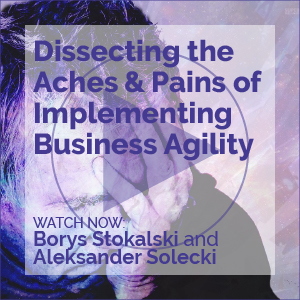Defining Today's Data Mining
One of the most interesting facets of business intelligence these days is data mining, which allows analysts and business professionals to dig deep into their organization's data to find patterns and infer rules. These patterns and rules can then be used to guide business users in making decisions and forecasting the effect of those decisions.
Making 60 Knots at Low-Low Tide: Changing Demographics and the IT Workforce
If you've spent much time at the seashore, you're probably familiar with high tides and low tides, and with high-high tide and low-low tide. Where low tide is a phenomenon that occurs every day as the moon passes by, low-low tide happens on those days when the moon and the sun are their absolute farthest distance from the Earth.
Leading Through Today's Turmoil: Strategic IT Human Capital Management
Businesses are now competing in two markets, one for their products and services and one for the talent required to produce or perform them. A company's success in its business markets is determined by its success in the talent market. At the very time that business markets are expanding, talent markets seem to be shrinking. As the knowledge required to build products and deliver services increases, the retention of experienced employees becomes critical to improving productivity and time to market.
Crisis? What Crisis? A Contrarian Perspective
© 2001 by Johanna Rothman. All rights reserved.
Software organizations take forever to hire technical people, we overwork them, our projects are late, we can't get everything done. We must have a people shortage, yes? No.
Recognizing and Retaining Key Employees: SRA's STAR Program
©2001 SRA International. All rights reserved.
Can Industry and Academia Collaborate to Meet the Need for Software Engineers?
Are you an IT director who has been able to hire a sufficient number of adequately trained software employees in a timely manner? If so, you are in the minority. A recent study commissioned by the Information Technology Association of America (ITAA) indicates that there were 1.6 million open positions for information technology (IT) workers last year, and only half of those positions were likely filled [3].
Planning and Executing Second-Generation E-Projects
For an industrial company that uses the Web, I don't think there is any end to the opportunities for savings, efficiency, and innovation.... When big companies get on the Web, they see huge benefits because of their relationships, their brands, and their assets.... Large businesses can create shareholder value that overwhelms the value that the dot-coms can create....
Planning and Executing Second-Generation E-Projects
For an industrial company that uses the Web, I don't think there is any end to the opportunities for savings, efficiency, and innovation.... When big companies get on the Web, they see huge benefits because of their relationships, their brands, and their assets.... Large businesses can create shareholder value that overwhelms the value that the dot-coms can create....
Lean Processes: Agile Development's Missing Link
Ten years ago, I was invited to join a panel of software engineering protagonists at Motorola. At our first meeting with then-CEO George Fisher, we drafted a list of goals for the panel. One of them was 10X cycle-time reduction, a central goal then and still today.
Newtonian Neurosis and the Extreme Project Manager
An extreme project looks like this:
Planning and Executing Second-Generation E-Projects
Planning and Executing Second-Generation E-Projects
Glitz and Glamor Versus Meat and Potatoes: What's Getting Outsourced
In previous Executive Updates, we've looked at IT executives' motivations for outsourcing and the types of models they plan to use (application service providers [ASPs], business process outsourcing [BPO], etc.). That has provided an understanding of the "whys" and the "hows" of outsourcing but not the "whats." Exactly what are IT organizations outsourcing?
Glitz and Glamor Versus Meat and Potatoes: What's Getting Outsourced
In previous Executive Updates, we've looked at IT executives' motivations for outsourcing and the types of models they plan to use (application service providers [ASPs], business process outsourcing [BPO], etc.). That has provided an understanding of the "whys" and the "hows" of outsourcing but not the "whats." Exactly what are IT organizations outsourcing?
Making 60 Knots at Low-Low Tide: Changing Demographics and the IT Workforce
Making 60 Knots at Low-Low Tide: Changing Demographics and the IT Workforce
Crisis? What Crisis? A Contrarian Perspective
© 2001 by Johanna Rothman. All rights reserved.
Crisis? What Crisis? A Contrarian Perspective
© 2001 by Johanna Rothman. All rights reserved.
Recognizing and Retaining Key Employees: SRA's STAR Program
©2001 SRA International. All rights reserved.
Recognizing and Retaining Key Employees: SRA's STAR Program
©2001 SRA International. All rights reserved.
Can Industry and Academia Collaborate to Meet the Need for Software Engineers?
Can Industry and Academia Collaborate to Meet the Need for Software Engineers?
Distance Learning
Organizational Matters











